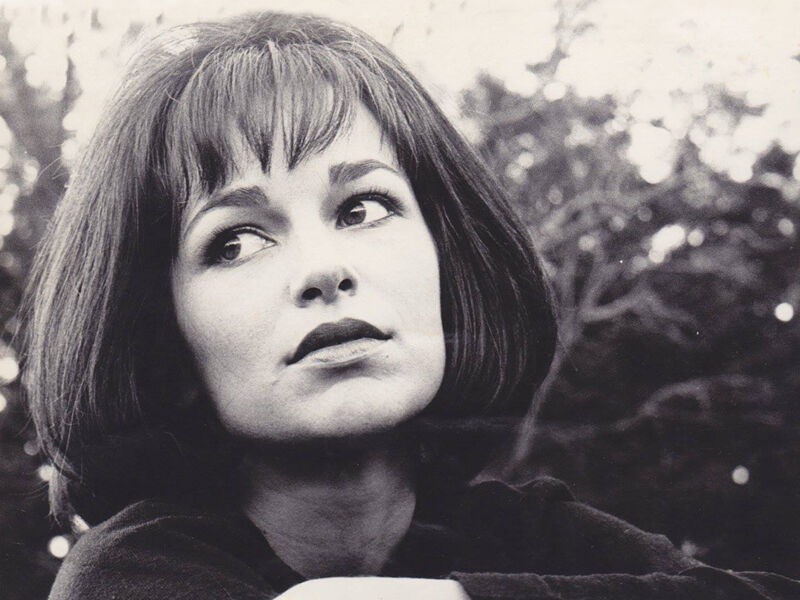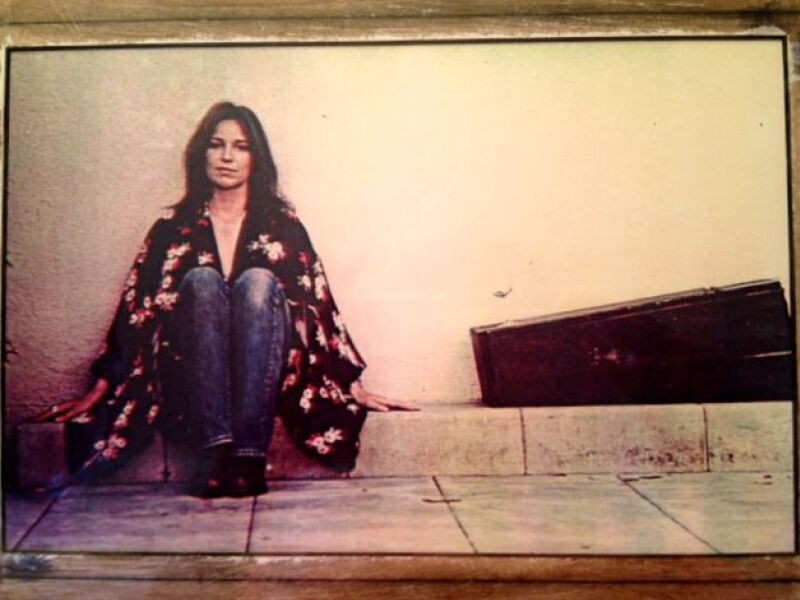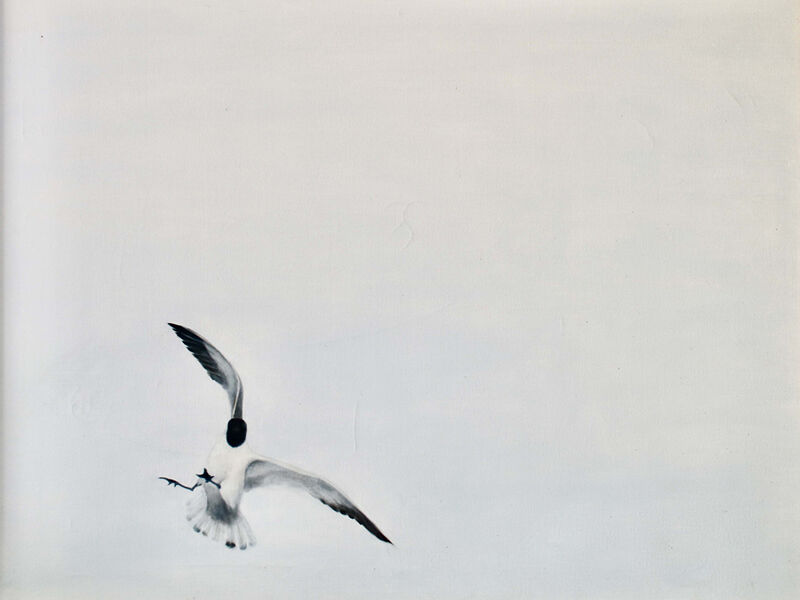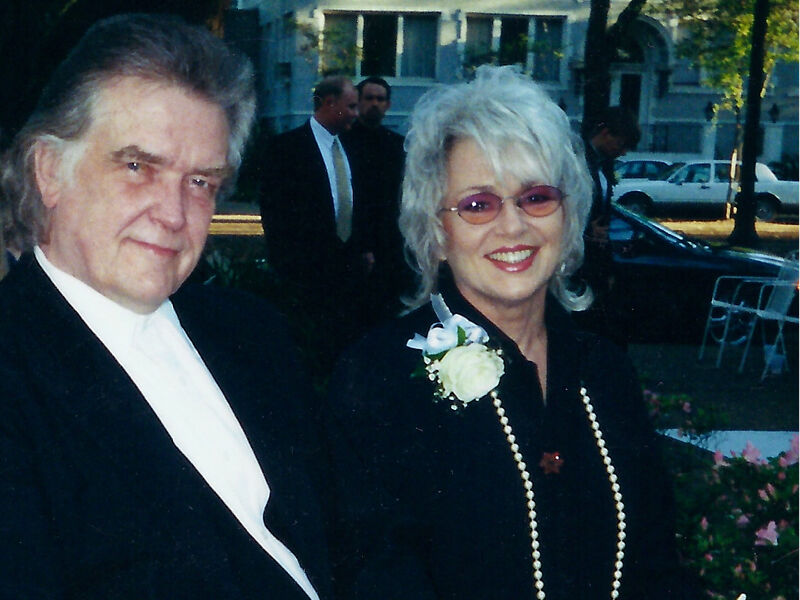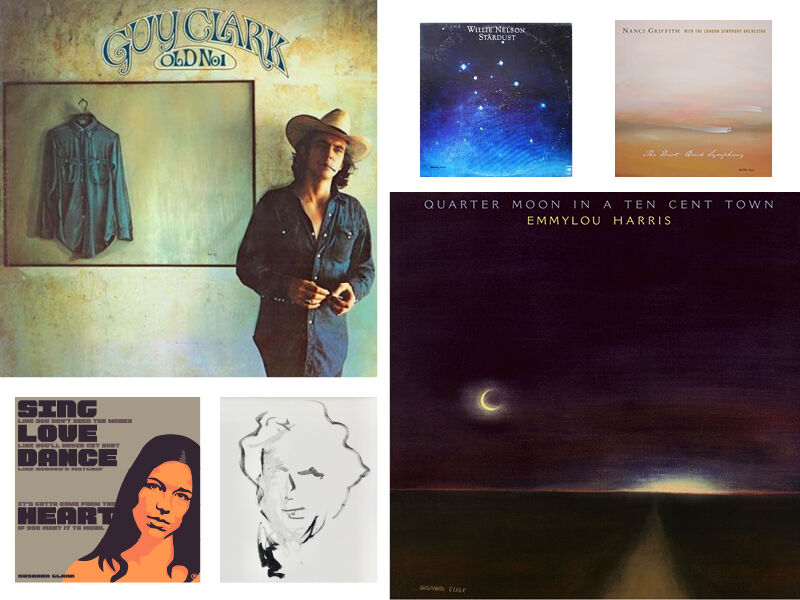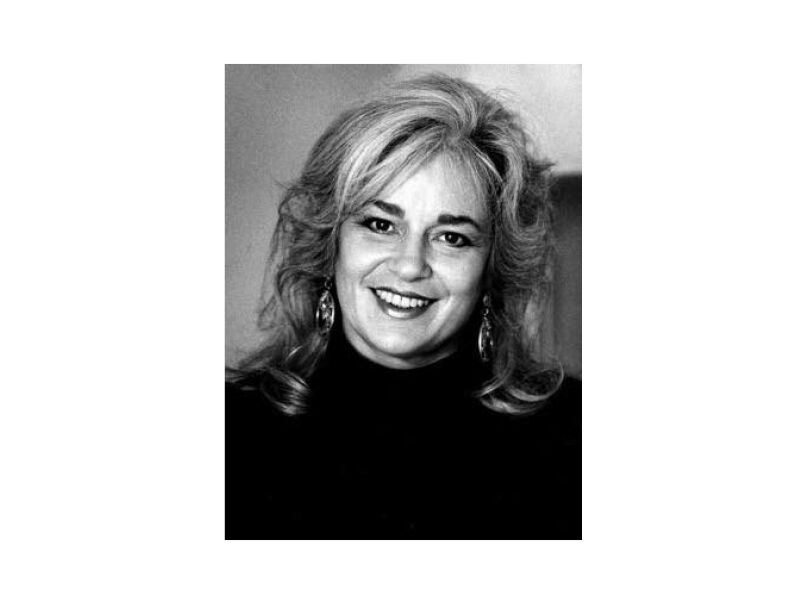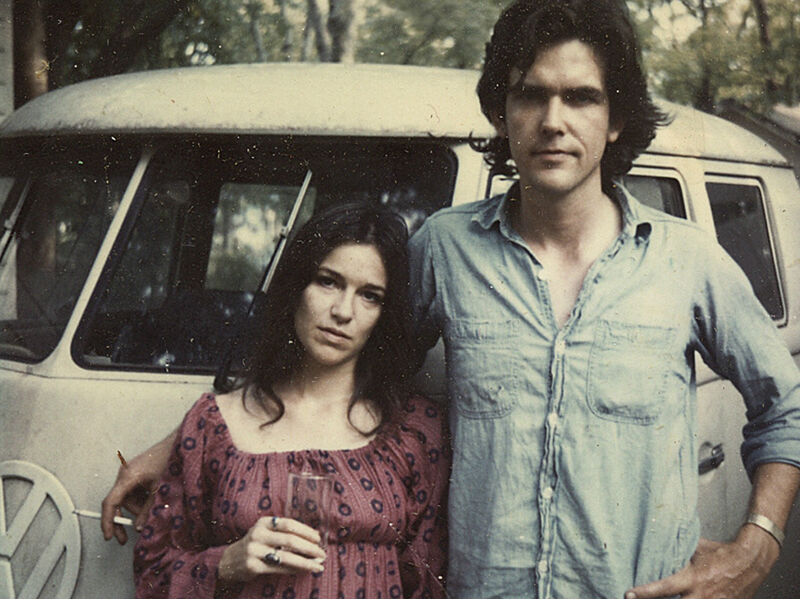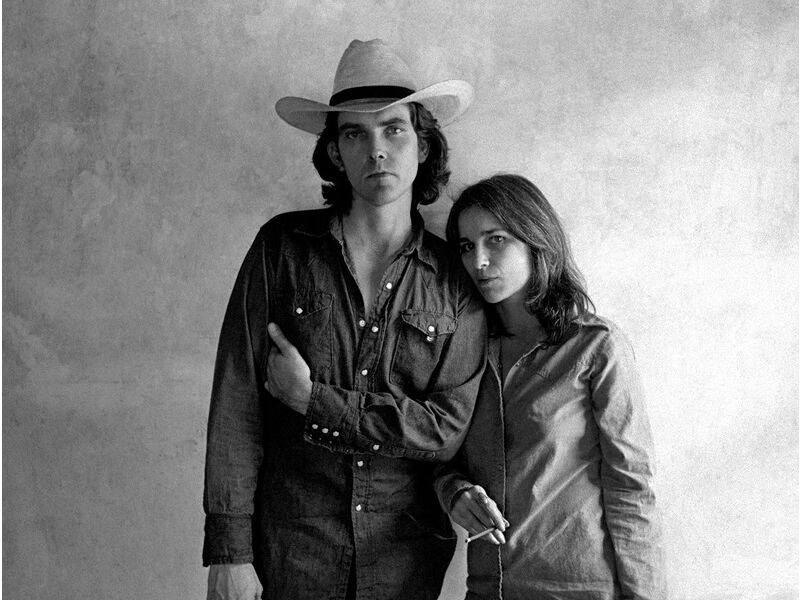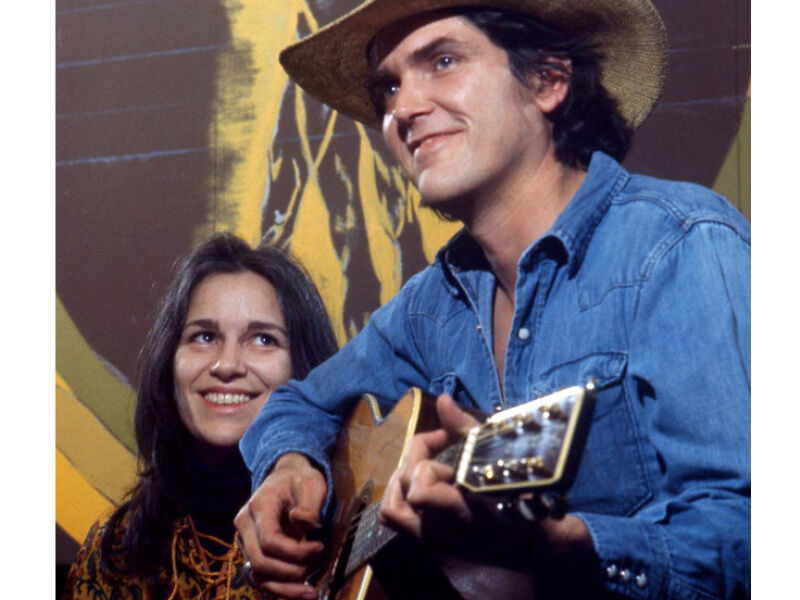By P.A. Geddie
“I’ve got a woman I love, she’s crazy and paints like God
She’s got a playground sense of justice, she don’t take odds
I got a tattoo with her name right through my soul
And I think everything she touches turns to gold.”
Guy Clark, “Stuff That Works”
Susanna Talley was born March 11, 1939, in Atlanta, Texas, a small town between Marshall and Texarkana in the Upper East Side of Texas. Hickory Street in her hometown was her favorite place in the whole world.
The sixth of nine children of John and Virginia Talley, she was courageously creative. Especially with paint and words. She married the love of her life — singer songwriter Guy Clark — in 1972. As Guy’s best friend and Susanna’s soulmate, legendary poet Townes Van Zandt was best man at their wedding. That’s the kind of creative energy she attracted, and expected.

The talented trio of Townes Van Zandt and Susanna and Guy Clark, wrote many songs together and played hosts to the outlaw Texas-Tennessee songwriters in the 1970s and beyond.
The Clark house was home base for Nashville’s songwriting community throughout the 1970s and beyond with Susanna the consummate thread holding it all together.
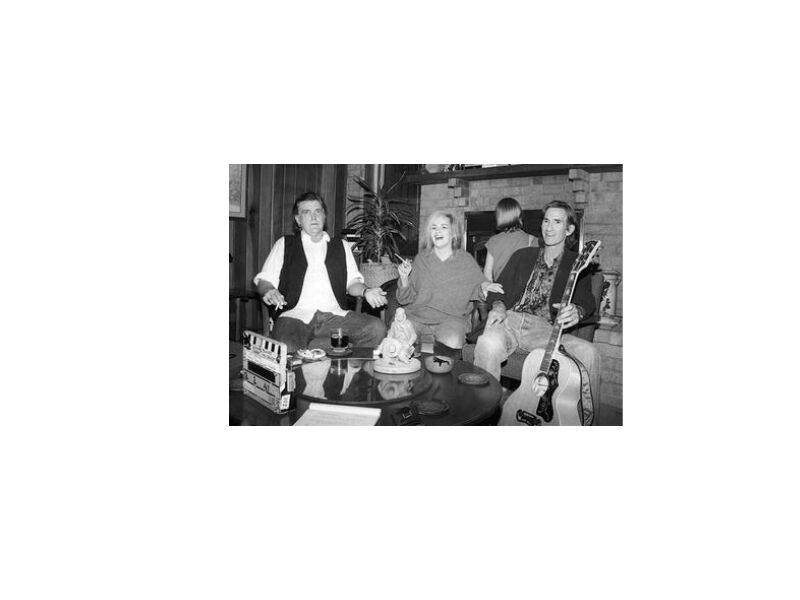
Guy Clark, Susanna Clark, and Townes Van Zandt
They were a big part of the “outlaw” musicians and rowdy writers who wrested creative control from record companies and made music that was authentic, poetic, and uncompromised.
Far from standing in the shadows of Texas’ most famous songwriters, Susanna was their muse, their light, the angel of mercy with the golden touch. She also created her own extraordinary work. Her spirit forever flows through timeless art and music she breathed into life in her 73 years on earth.
So it’s no surprise that directors Tamara Saviano and Paul Whitfield chose to tell Guy Clark’s story from Susanna’s perspective in their film Without Getting Killed or Caught. The documentary is narrated in Susanna’s voice by Academy Award-winner Sissy Spacek, a fellow East Texan who grew up in Quitman, a short distance away as the crow flies from Susanna’s hometown of Atlanta.
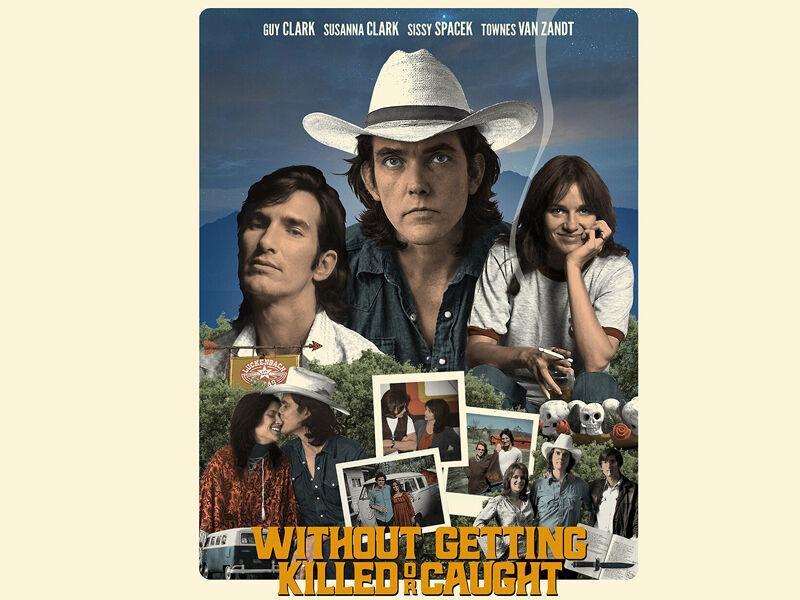
The film won this year’s SXSW Louis Black “Lone Star” award and is showing virtually through ticket sales from www.withoutgettingkilledorcaught.com. (UPDATE 04.01.23: The film is now available for streaming on Amazon Prime.)
The title comes from Guy’s song “L.A. Freeway” that favors small towns to the false allure of big cities.
“Pack up all your dishes / Make note of all good wishes / Adios to all this concrete /Gonna get me some dirt road back street / If I can just get off of this L.A. freeway / Without getting killed or caught / I’ll be down the road in a cloud of smoke / To some land I ain’t bought / Oh Susanna don’t you cry, babe / Love’s a gift that’s surely handmade / We’ve got something to believe in / Don’t you think it’s time we’re leavin’.”
Yes, she’s that Susanna. Forever immortalized in a classic.
In Without Getting Killed or Caught, the couple’s closest friends and musical allies — including Rodney Crowell, Steve Earle, Vince Gill, Verlon Thompson — talk about her influence on them as much as his. Set to Guy’s most famous songs, viewers see family photographs, vintage film footage and radio talk shows, and hear Susanna’s sometimes pained remembrances from her private journals and secret audio diaries.
When Townes Van Zandt died January 1, 1997, their outlaw family took it hard, none more so than Susanna. She was depressed and ill off and on for the next few years, progressively getting worse the final years of her life. She died June 27, 2012. Guy died four years later.
Sherri Talley Lemaire inherited her Aunt Susanna’s important things, some of which Saviano used to tell their story, first in a book with the same title that released in 2016, then with the film this year.
“Everyone involved did a beautiful, dignified job,” Lemaire says. “They told the story in a very gentle way. There was a lot of heartache and a lot of wonderful things too. Tamara handled the tragic parts well.”
She says Guy and Susanna would be proud of the film.
“Fairness, accuracy, and the truth are what should matter. And that’s what Guy and Susanna felt was important in the purity of writing. They would appreciate it.”
As Guy’s publicist, Saviano started the process of writing his book many years ago with the full support of both Guy and Susanna.
“He had a lot of trust in Tamara,” Lemaire says, “and felt fine with whatever way she wanted to tell it. She didn’t mince words.”
At Susanna’s request, Saviano got to know Lemaire and her relationship with her famous aunt through many letters and family treasures.
Lemaire says she has wonderful memories of Susanna, some her own as they grew close as adults, and others told to her by her father who was Susanna’s brother.
Growing up in Atlanta, Texas, was always high on their list of favorite stories.
“They talked abut the memories so fondly,” Lemaire says. “It was a really special place for them their entire lives.”
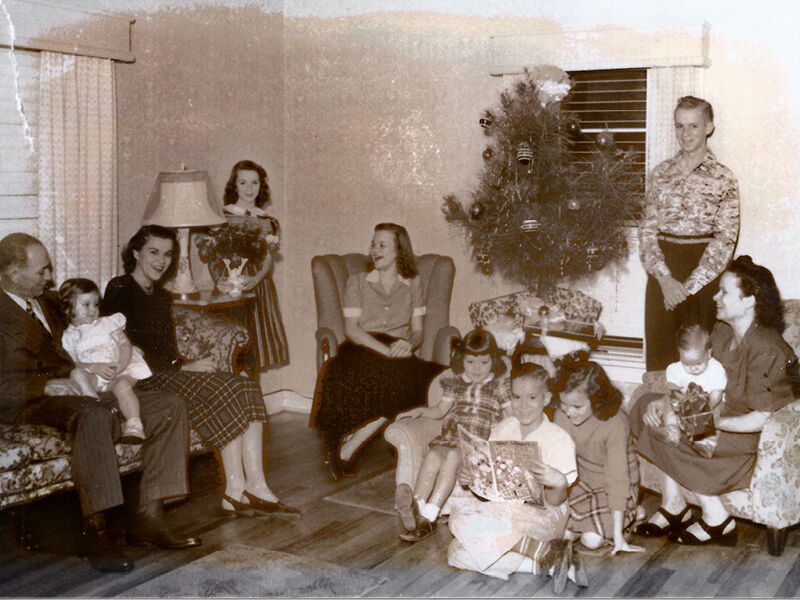
The Talley Family in Atlanta, Texas. (l-r) John, Dee, Sally, Billie, Joan, Bunny, Dan, Susanna, Jack, Jim, and Virginia. Susanna’s memories of growing up here made it her favorite place in the world. The kids had a favorite playground near this house on Hickory Street which is where most of her ashes were released after her death in 2012.
Lemaire says everyone in the Talley family told great tales.
“They were master storytellers,” she says. “Every word mattered. They would sit around taking turns and listening was as much a part of that as telling. They were fascinating and told with such great wit. It was a very intelligent wit, often hilarious in the telling. It’s no wonder Susanna gravitated to that type of art.”
At some point in Susanna’s childhood, the family moved to Oklahoma City as her father’s entrepreneurial endeavors became more successful. The city was also home to some of her mother’s family, the Kirkpatricks, who were part of a wealthy oil dynasty. Susanna and her siblings became members of “high society” and involved with the Kirkpatrick Fine Arts Center, the main performance venue at Oklahoma City University still today. It was dedicated to relatives, Eleanor and John Kirkpatrick, in 1967.
Around that time, Guy Clark played shows in Oklahoma City and he met Susanna’s sister Bunny who was executive director of the Oklahoma Science and Arts Foundation. They kept in touch as Guy toured with Van Zandt and others and home based out of Houston.
Like her sister, Susanna was involved with creative projects and taught art classes.
Sadly, Bunny committed suicide May 3, 1970, at the age of 25. Guy came to the funeral and sat next to Susanna.
In a Texas Monthly article, he told John Spong that he and Susanna were together from then on.
“I sat next to Susanna at the funeral, and it just never ended. It was a loss for both of us, and she needed some place to go other than family. I don’t think we were ever apart after that.”
Susanna went with Guy to live in Houston. In a 2004 documentary, “Be Here To Love Me,” about Townes Van Zandt, the couple recounts early memories with Van Zandt during her first months in Houston.
“There was a certain part of my life that Townes admired,” Guy says. “Figure it’s mostly Susanna. Susanna and Townes were like serious soulmates.”
Susanna talks about meeting Van Zandt for the first time.
“On July 4th, I moved down to Houston where Guy lived and I didn’t know one soul.”
There were a lot of people at Guy’s place and they were partying heavy and she was a bit uncomfortable. Guy implies that was because of her more elite lifestyle.
“Susanna was a debutante coming from the highest dollar family in Oklahoma City,” Guy teases.
She waves dismissively at Guy as he laughs and she continues.
“Anyway, Townes comes up to me in all this and says, ‘Susanna, I don’t know you very well, but if Guy loves you, I love you.’ And he put his arms around me and held me for a long time. He said, ‘I mean that.’”
Guy and Susanna then kid around with each other about what Townes’ intentions were to Susanna with Guy saying he always had to keep one eye on him and Susanna saying he was never inappropriate with her.
The couple left Houston and moved to Los Angeles for one year as Susanna encouraged him to follow his artistic passions rather than sticking with a monotonous desk job. Here’s where they met “Skinny Dennis” and seeds were planted for “LA Freeway.”
When Guy got a song publishing deal in the fall of 1971, they moved to Nashville where their artistic partnership merged with Van Zandt and others in their close-knit songwriters community and they all left the world with a big bucket of timeless music for the soul.
“Guy, Susanna, and Townes leaned on each other and believed in each other,” Saviano writes in her book. “Guy wrote songs. Townes wrote songs. Susanna painted and composed poetry.”
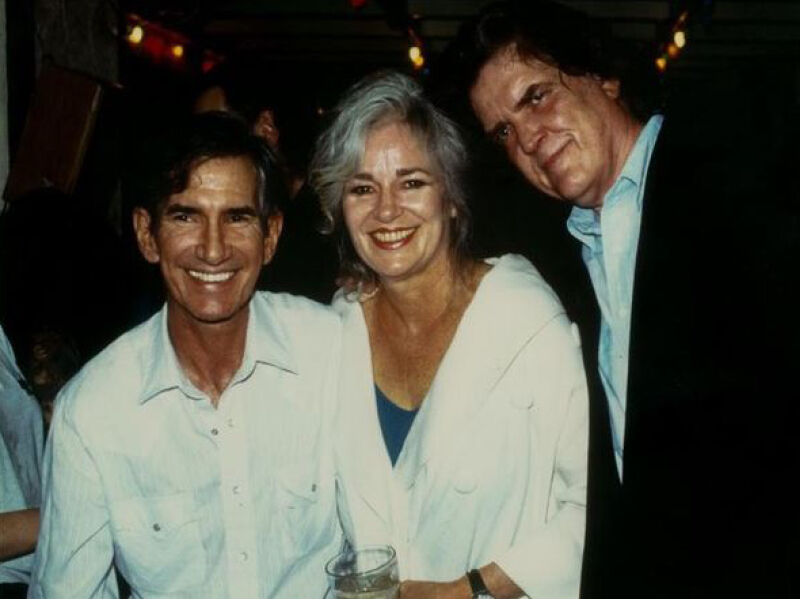
Townes Van Zandt, Susanna and Guy Clark
Susanna was loved deeply by Guy and their friends. She was often the subject of or inspired their lyrics. Rodney Crowell wrote “Angel Eyes” for her and then later, “Life Without Susanna,” where he calls her a “pure angel of mercy, East Texas style.”
“She was as no BS as Guy was,” Crowell says in Without Getting Killed or Caught. Steve Earle notes, “We learned to write songs from Guy and Townes, but we learned how to carry ourselves as artists from Susanna.”
Everybody loved Susanna.
“I think there are so many qualities that go in to that,” Lemaire says. “She was almost larger than life. She didn’t mince words. She didn’t tell you what you wanted to hear. She would call you on your behavior. She demanded that you be as real as she was in her presence.”
As a child, Lemaire looked up to her Aunt Susanna and admired her artistic talent but in the “wild 70s” she was not allowed to hang out with her. She was about 26 years old and hadn’t seen Susanna in years when she decided it was time and gave her a call in Nashville.
“Susanna said, ‘I don’t know where you’ve been but I’m sending you a plane ticket.’”
“We met for lunch at the Grand Ole Opry,” Lemaire remembers. “I walked in and we immediately knew each other. We looked so much alike. We had the best time. We talked and talked and were close from then on.”
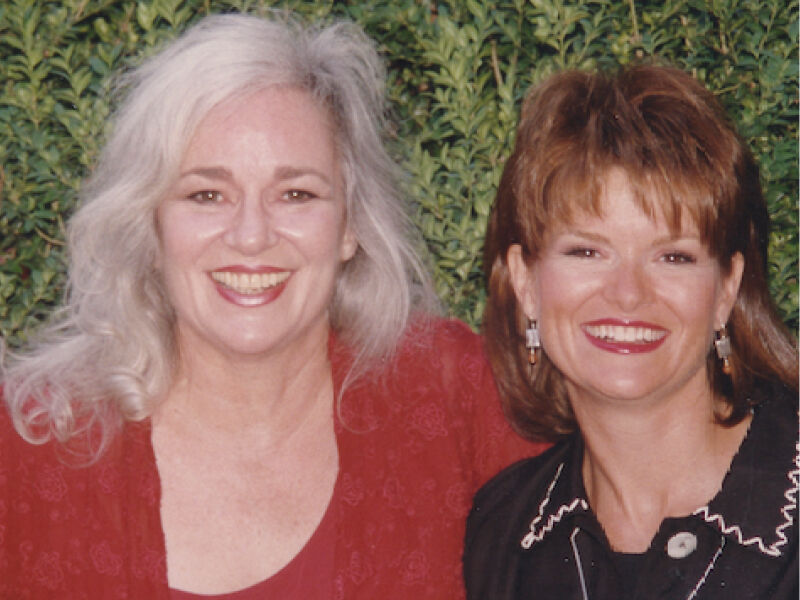
Susanna Clark with her niece Sherri Talley Lemaire circa 1995 who inherited most of her aunt’s belongings after her death in 2012.
Lemaire said they talked often on the phone and Susanna would call and sing her a new song she’d written.
“She had a thing for words and I did too. We loved telling each other witty sayings and things that were brilliant and original that our friends had said. We talked about everything and nothing for hours.”
Lemaire was living in Shreveport during those years and Susanna came to visit her there and she’d go see her in Nashville too.
One of the last times she saw Guy and Susanna together she was visiting them in Nashville after Susanna had some of her cancerous lung removed. They were sitting around the kitchen table and Susanna was still smoking.
“Guy and I were trying to get her to quit smoking and it was a tense conversation,” Lemaire remembers. “Then Guy told me to, ‘go downstairs and get that Polaroid picture on my work bench and bring me the lyrics of “My Favorite Picture of You.” And bring me #12’ — that was the 12th guitar he made.
“I brought them up and he played the song before it was released.”
Although Susanna was a little ticked cause they’d been after her about smoking, Guy knew that would change her mood.
“She had this wonderful feeling on her face listening to her husband play this song. Like it was overdue. It was very emotional for me. She wasn’t emotional, though — she thought it was cool.”
- Sherri Talley Lemaire’s favorite picture of her aunt Susanna from her early years in Nashville.
- One of Susanna Clark’s paintings now with her niece Sherri Talley Lemaire. Susanna was known for leaving lots of space around the subjects of her paintings.
- Guy and Susanna attending her nephew’s wedding in New Orleans in 2000.
- Artwork and album covers designed by Susanna Clark.
- Susanna Talley Clark (circa 1980s)
- Susanna and Guy Clark
- Guy and Susanna in their early years together.
- Susanna and Guy Clark
The energy between them flowed playfully like that much of the time — like each of them thought the other was the coolest person in the world.
Guy released the song on his studio album “My Favorite Picture of You” in 2013.
The photo was taken in the late 70s or early 80s and the story goes that Susanna was fed up with the shenanigans of Guy and Van Zandt on this particular day. Someone snapped a Polaroid with her standing on a porch with her arms crossed “staring straight into the lens.”
“My favorite picture of you / Is the one where / Your wings are showing / Oh and your arms are crossed / Your fists are clenched / Not gone but going / Just a stand up angel / Who won’t back down / Nobody’s fool, nobody’s clown / You were smarter than that.”
While Guy received much more notoriety for his music, Susanna also wrote songs. “I’ll Be Your San Antone Rose,” was first recorded by RCA artist Dottsy in 1975. Jerry Jeff Walker recorded several of Susanna’s songs including “We Were Kinda Crazy Then.” She co-wrote “Heavenly Houseboat Blues” with Van Zandt. “Easy From Now On” was recorded by her co-writer Carlene Carter as well as Emmylou Harris and later Miranda Lambert.
She co-wrote six songs with Guy including “Black-Haired Boy” and “The Cape.”
She co-wrote “Come From the Heart” with Richard Leigh. It was recorded by Don Williams and became a #1 song for Kathy Mattea in 1989 with some of country music’s most famous lyrics.
“You’ve got to sing like you don’t need the money / Love like you’ll never get hurt /You’ve got to dance like nobody’s watching / It’s gotta come from the heart if you want it to work.”
Susanna’s gifts went beyond words. She painted many pieces and illustrated several album covers including Willie Nelson’s Stardust; Guy’s Old No. 1, Emmylou Harris’ Quarter Moon in a Ten Cent Town, and Nanci Griffith’s The Dustbowl Symphony.
Lemaire said Susanna visited Atlanta, Texas, over the years and the place that nurtured her formative years became important to Guy too.
“They both loved Atlanta,” Lemaire says. “When he and Verlon played in Linden, they’d stay as close to Atlanta as possible.”
In an interview with the Austin Chronicle a year after Susanna’s death, Guy said she didn’t want a service and he had her ashes with him in his home.
“If I ever get back to Atlanta, Texas, I’m going to drop them at the end of the street,” he told the reporter.
Guy didn’t make it back to Atlanta, but he gave the urn with most of Susanna’s ashes to Lemaire.
“He said, ‘she probably would want them in Atlanta, but I’ll leave that to you.’”
There was a special place where Susanna and her siblings used to play near their house on Hickory Street, Lemaire says, and that’s where she spread her ashes.
“It began to rain and I took a picture of the area and showed it to Guy when I returned to Nashville to see him. I wanted him to see where she was laid to rest. He said, ‘That’s just beautiful.’”
Guy reserved some of the ashes for himself. Those ended up with Rodney Crowell after Guy passed away. Just weeks ago on what would have been her 82 birthday, he gathered friends and in a simple ceremony they said goodbye to Susanna and sent her remaining ashes sailing down the Little Harpeth River near Nashville.
Susanna was posthumously inducted into the Texas Heritage Songwriters Hall of Fame in 2020.
Lemaire has her journals, some of her artwork, and other personal things and has willed some of them to The Wittliff Collections at Texas State University in San Marcos where Guy’s ashes rest at the entryway in a crow sculpture created by Terry Allen.
Some of her original work — including the painting for Willie Nelson’s Stardust album cover — is in the reconstructed Guy Clark workshop in the Country Music Hall of Fame Museum in Nashville. Part of the exhibit “Outlaws & Armadillos: Country’s Roaring 70s,” a piece of the Clark home is the perfect place for visitors to get a feel of this era of cultural and artistic Texas-Tennessee fusion. Susanna’s spirit is there as surely as it is in her golden playground in the sky over Atlanta, Texas.

